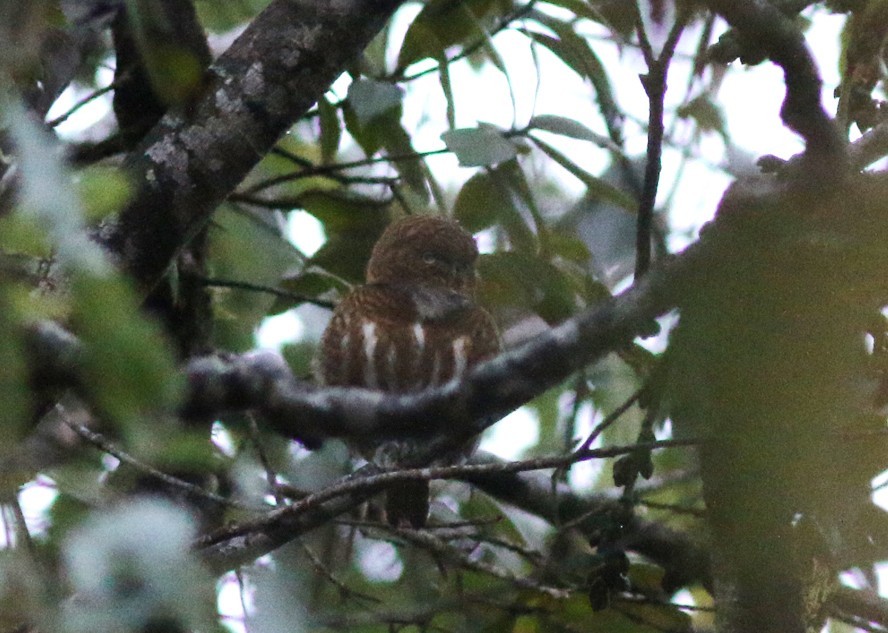Collared Owlet
A species of Pygmy-owls Scientific name : Taenioptynx brodiei Genus : Pygmy-owls
Collared Owlet, A species of Pygmy-owls
Botanical name: Taenioptynx brodiei
Genus: Pygmy-owls
Content
Description General Info
 Photo By Rofikul Islam
Photo By Rofikul Islam Description
The collared owlet, being Asia's smallest owl species, measures between 15 and 17 cm. Females are generally larger than the males, weighing approximately 63 grams, whereas males weigh in at 52 grams. This bird has a grey-brown colour (depending on age-morph) and has a barred back and flanks, while the head is more spotted than barred. They have prominent white eyebrows, vibrant lemon-yellow-coloured eyes and a white throat patch. The chin, center of the breast and belly are mostly white. The pale collar and the two black spots on each side of the nape imitate eye spots and make it seem like the owl is staring at you from behind. This is known as the "occipital face". It has a greyish-brown pale-spotted pectoral band on upper breast and lacks ear-tufts. You can see its tail when in flight, longer than most pygmy owls, and has rapid wingbeats. 
Size
17 cm
Nest Placement
Cavity
Feeding Habits
Collared Owlet preys primarily on small mammals, birds, lizards, and invertebrates. Exhibiting fierceness despite its size, collared Owlet can capture prey as large as itself, carrying it to a perch and dismembering it with its talons and bill.
Habitat
Their preferred habitat varies from evergreen forests, forest edges, mixed deciduous-evergreen forests with oak, rhododendron and fir and open woodlands with scrub. They can be found in submontane and montane habitats varying between 1350–2750 meters in altitude, but they have also been seen near cultivated lands as low as 700 meters in altitude. Species in the genus Taenioptynx are secondary cavity-nesters. This small owl does not create its own nest, but rather nests in natural tree hollows or chambers created by woodpeckers and barbets. 
Dite type
Insectivorous
General Info
Feeding Habits
Bird food type
Behavior
The collared owlet is most active during daylight. Being diurnal, this bird can be seen perching, hunting and calling during most parts of the day, and sometimes during the night. It is often mobbed by other small birds when roosting. 
Distribution Area
The collared owlet has a very large range occurring in the Himalayas of northern Pakistan all the way to eastern China and Taiwan. Its range extends southwards through Malaysia. This bird can be found in the following countries: Bhutan, Brunei Darussalam, Cambodia, China, India, Lao People's Democratic Republic, Malaysia, Myanmar, Nepal, Pakistan, Taiwan, Thailand and Viet Nam. 
Species Status
Although the collared owlet is at least concern on the IUCN Red list, its main threat is habitat loss. In a study examining the effects of fragmentation on nocturnal birds in Asia, collared owlets were never found in forest fragments smaller than 100 hectares. The authors concluded that anthropogenic pressures such as deforestation can affect even small species such as the collared owlet. 

 Photo By Rofikul Islam
Photo By Rofikul Islam